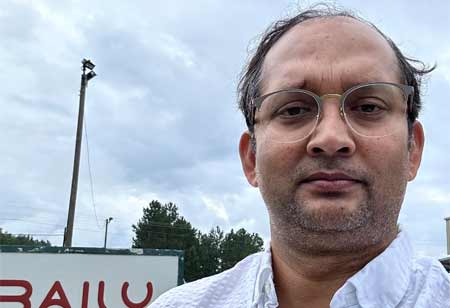Salmon has been proven to be one of the best commercial fish species in the Western world due to its high growth rate, adaptability, nutritional value and market price. And Atlantic salmon were leading the salmon industry. Although originated in the Atlantic Ocean, it is farmed on both coasts of the Atlantic and Pacific oceans in the United States, Canada, Chile, Europe, and Australia.
Aquaculture became a need when wild fisheries production started to drop due to overfishing, which depleted the stock. Moreover, the growing world population demanded more food, including fish. However, just aquaculture was not enough, world asked for sustainable aquaculture due to its adverse impact on surrounding environment when it was not practiced sustainably, respecting aquatic ecosystem around it.
The likelihood of disease spread from farmed Atlantic salmon to its wild counterpart is reported to be a threat to its aquatic environment. To address this threat, the sustainable aquaculture industry developed its fish health management program, including regular fish health monitoring, pathological testing, health management, and water quality testing.
Aquaculture became a need when wild fisheries production started to drop due to overfishing, which depleted the stock
Before entering the open net-pen at the ocean sites, all smolts (baby salmon) are vaccinated. However, the healthy baby salmon is not always welcomed to the ocean sites, rather experiences a challenging natural habitat in its journey there. The ocean could be hostile and they are exposed to unfavorable aquatic environments including pathogens and harsh physico-chemical aquatic conditions. Also, the high density of fish in net pens makes them vulnerable to diseases.
As a term and condition to hold the license, aquaculture operators are required by the government to control diseases at an acceptable level. Moreover, third-party certification bodies, such as Best Aquaculture Practices (BAP) and Aquaculture Stewardship Council (ASC), also require the aquaculture operators to have a fish health management plan to maintain certification. So, routine fish health monitoring and reporting is a common practice in the industry. It starts with water quality testing including temperature, dissolved oxygen level, pH, salinity, algae/ plankton, etc. Plankton testing is both qualitative (identification of algal species) and quantitative (density). While alga or phytoplankton is a food for herbivorous fish, it is not a food for salmon. Rather, a high-density harmful algal bloom caused mass mortality in off-shore salmon industry in Canada and globally.
Chaetoceros convolutus, Skeletonema spp. and
Pseudo-nitzschia spp. of algal species were reported to cause mortality through physical damage of gills and affecting feeding in Western Canada and the United States on the Pacific coast.
On-farm sites, salmon is tested for sea lice identification. There are two species of sea lice found on salmon,
Caligus elongates and
Lepeophtheirus salmonis. Also, routine sea lice count and reporting to the government is a requirement for the licensee. Industry also takes physical and chemotherapeutic (e.g., SLICE) measures to keep the count per fish below the threshold.
Regularly, salmon is tested for general health status by the fish health department of the aquaculture companies. This includes checking gill health, skin health, signs of disease and categorizing them. The fish health department closely monitors the fish health trend and takes measures as appropriate. Some diagnoses are conducted in third-party accredited labs. In winter months, the salmon industry is challenged by winter ulcer on Atlantic salmon that ultimately results in the downgrading of fish product in the processing plant.
To treat common viral and bacterial diseases in Atlantic salmon at ocean sites, limited antibiotics are used through oral feeding when other fish health management tools fail or in support of them. A licensed Veterinarian prescribes the antibiotics and other chemotherapeutics. The use of antibiotics is strictly regulated in the Western world. Third-party certification bodies also developed their standards limiting the use of antibiotics. Moreover, the industry is required to test fish for clear withdrawal of chemotherapeutics before harvest and processing in the plant. This step is a CCP (Critical Control Point) for aquaculture fish that uses chemotherapeutics to treat fish. Moreover, chemical, microbiological and nutritional tests are conducted in the lab before and after the harvest of Atlantic salmon.
The use of high-tech in the salmon industry is increasing to monitor fish health. iFarm is one of the latest technologies used to identify sick fish. Global salmon farmer Cermaq has deployed a fourth version of its iFarm, which aims to improve the health and welfare of fish with the help of artificial intelligence (AI) and machine learning. A sensor quickly scans, recognizes, and records data on a specific fish using recognition data based on each fish’s unique markings and structure. It is a revolutionary fish health monitoring technology.
Government departments routinely audit the aquaculture farms and processing plants, and take samples for testing in the government labs. Aquaculture farms must pass the audits to comply with the local and federal acts and regulations.
At the end of the day, after all the hurdles, aquaculture brings healthy, safe and nutritious food to us. All the testing in aquaculture is to ensure fish is healthy and safe for human consumption.



